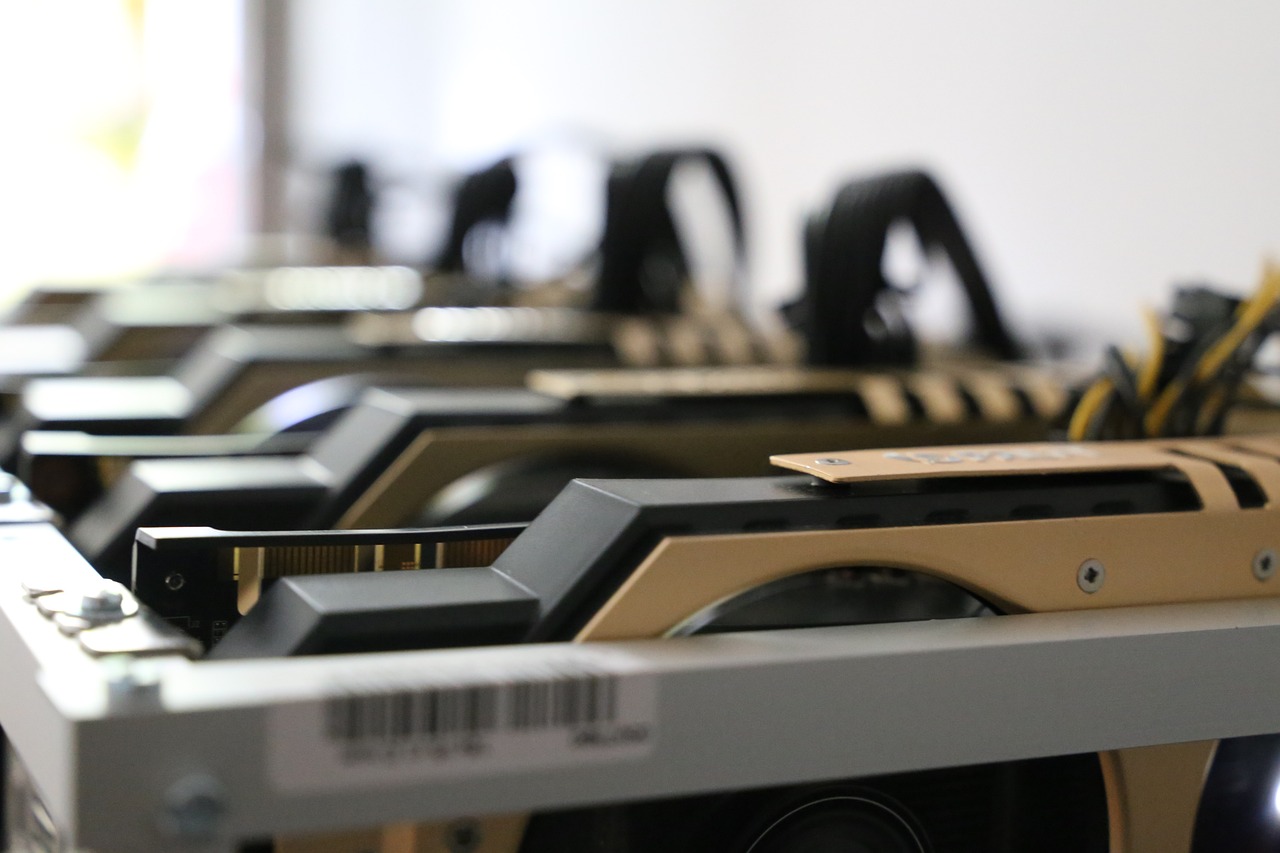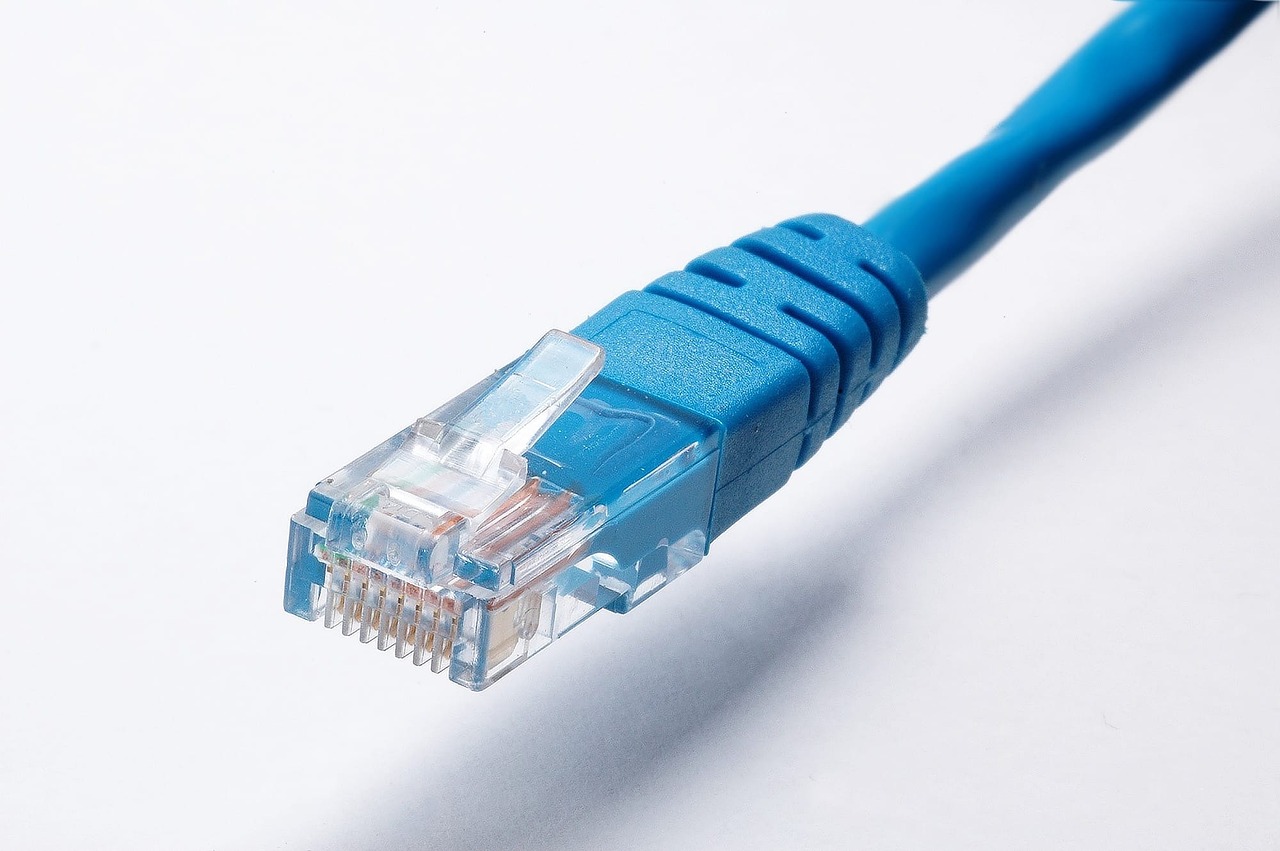Matic Network - Layer 2 Scaling for Ethereum
In the ever-evolving world of blockchain technology, scalability remains a hot topic, especially when it comes to Ethereum. As more users flock to decentralized applications (dApps) and smart contracts, the Ethereum network often faces congestion, leading to high gas fees and slow transaction times. This is where Matic Network steps in, acting as a lifebuoy for Ethereum by providing a robust Layer 2 scaling solution. But what exactly does this mean for users and developers alike? Let’s dive into the intricate world of Matic Network and uncover how it enhances Ethereum's scalability while maintaining security and efficiency.
Matic Network, now known as Polygon, has taken the blockchain community by storm with its innovative approach to solving Ethereum's scalability issues. By utilizing a combination of advanced technologies, Matic offers a platform that not only improves transaction speed but also significantly reduces costs. Imagine trying to send a letter through a crowded post office—it's frustrating and time-consuming. Now, picture a dedicated courier service that ensures your letter arrives swiftly and at a fraction of the cost. That’s the essence of what Matic Network provides for Ethereum users.
One of the standout features of Matic Network is its ability to handle a high volume of transactions without compromising on security. By leveraging the power of Plasma and Proof of Stake mechanisms, Matic ensures that transactions are processed efficiently while safeguarding the integrity of the network. This means that developers can build and deploy dApps with confidence, knowing that their applications will run smoothly and effectively. Furthermore, Matic Network is designed to be user-friendly, making it accessible to both seasoned developers and newcomers in the blockchain space.
The impact of Matic Network on the Ethereum ecosystem cannot be overstated. As it alleviates network congestion, more users can participate in the blockchain revolution without facing the hurdles of high fees and slow processing times. This not only enhances user experience but also encourages the adoption of dApps, leading to a more vibrant and diverse Ethereum ecosystem. In essence, Matic Network is not just a solution; it’s a catalyst for growth and innovation within the blockchain landscape.
In summary, Matic Network is a game-changer for Ethereum, providing a layer of scalability that enables faster transactions, lower fees, and an overall improved user experience. As we progress through this article, we will explore the architecture of Matic Network, its advantages, and its broader implications for the future of the Ethereum ecosystem. Buckle up as we navigate through the exciting world of Matic Network!

Understanding Layer 2 Solutions
Layer 2 solutions are like the secret sauce that enhances the flavor of blockchain technology, particularly Ethereum. Imagine you’re at a busy restaurant, and the waiter brings your order but takes forever to do so. Frustrating, right? That’s how Ethereum can feel during peak times with its congestion and high fees. Layer 2 solutions, like Matic Network, swoop in to save the day by allowing for faster transactions and lower fees while keeping the security intact.
But what exactly are Layer 2 solutions? In simple terms, they are protocols built on top of the base layer (Layer 1) of a blockchain that help to increase its scalability. Think of Layer 1 as the foundation of a house, while Layer 2 is the additional space you build on top to accommodate more guests. This architecture allows for a significant increase in transaction throughput without compromising the integrity of the blockchain.
Layer 2 solutions typically work by processing transactions off the main Ethereum chain, which reduces the load on the network. These transactions are then bundled and sent back to the main chain for final settlement. This approach not only speeds up the transaction process but also dramatically lowers gas fees, making it more affordable for users to interact with decentralized applications (dApps).
Here are some key aspects that highlight the importance of Layer 2 solutions:
- Scalability: Layer 2 solutions can handle thousands of transactions per second, compared to Ethereum's limited capacity.
- Cost Efficiency: Users benefit from significantly reduced transaction fees, making it more feasible to engage with dApps.
- Security: Layer 2 solutions maintain a high level of security by leveraging the underlying security of the Ethereum network.
In conclusion, understanding Layer 2 solutions is crucial for anyone interested in the future of blockchain technology. They not only enhance the user experience by making transactions faster and cheaper but also pave the way for broader adoption of blockchain applications. As we dive deeper into Matic Network, we will see how it effectively implements these Layer 2 solutions to tackle the challenges faced by Ethereum.

Matic Network Architecture
The Matic Network employs a unique architecture that combines two powerful technologies: Plasma and Proof of Stake (PoS). This combination is not just a technical choice; it’s a strategic move aimed at enhancing the scalability and efficiency of the Ethereum blockchain. By leveraging these technologies, Matic Network provides a robust framework that allows for rapid transaction processing while ensuring that security remains intact. Think of it as a high-speed train running on a well-maintained track—speedy yet secure!
At the heart of Matic's architecture is the Plasma framework, which facilitates off-chain transactions. This means that instead of every transaction being processed on the Ethereum mainnet, many can occur off-chain, significantly reducing congestion. Imagine a busy highway where traffic is flowing smoothly because some vehicles have opted for a less crowded side road. This is precisely what Plasma does for Matic Network, enabling faster and more efficient processing.
In conjunction with Plasma, the Proof of Stake mechanism plays a critical role in maintaining the network's integrity. Validators in the Matic ecosystem are incentivized to act honestly, as their stake is at risk. This not only secures the network but also enhances its overall efficiency. The synergy between these two technologies ensures that Matic Network can handle a high volume of transactions while keeping costs low and speeds high. To put it simply, Matic’s architecture is like a well-oiled machine, where each component works harmoniously to deliver optimal performance.
Let’s break down the core components of Matic Network’s architecture:
| Component | Description |
|---|---|
| Plasma Framework | Enables off-chain transactions to reduce congestion on the Ethereum mainnet. |
| Proof of Stake (PoS) | Secures the network and incentivizes validators to maintain integrity. |
| Sidechains | Facilitates faster transactions by allowing operations to occur independently from the main Ethereum chain. |
This architecture not only enhances the user experience by providing lower fees and faster transaction times but also supports developers in building scalable decentralized applications (dApps). By utilizing Matic Network, developers can tap into a seamless environment that allows them to focus on innovation without worrying about the limitations often faced on the Ethereum mainnet.
In conclusion, Matic Network's architecture is a game-changer for Ethereum's scalability challenges. With its innovative use of Plasma and PoS, it opens up new possibilities for users and developers alike, making the blockchain experience smoother and more accessible. As we continue to see advancements in this space, Matic Network stands poised to play a pivotal role in the evolution of blockchain technology.
- What is Matic Network?
Matic Network is a Layer 2 scaling solution for Ethereum that enhances transaction speeds and reduces costs. - How does Plasma work?
Plasma allows for off-chain transactions, which alleviates congestion on the Ethereum mainnet. - What is Proof of Stake?
Proof of Stake is a consensus mechanism that secures the network and incentivizes validators to act honestly. - Why is Matic Network important?
Matic Network is crucial for improving Ethereum's scalability, enabling more users and developers to participate in the ecosystem.

Plasma Framework
The is a cornerstone of Matic Network's approach to scalability, designed to enhance the Ethereum blockchain by enabling off-chain transactions. Imagine a busy highway where traffic is often congested—Plasma acts like an express lane, allowing vehicles (or transactions) to bypass the main road and reach their destination faster. This innovative framework creates child chains that operate independently from the Ethereum mainnet, which means that transactions can be processed more swiftly and efficiently.
So, how does this work? At its core, Plasma allows users to conduct transactions off the main Ethereum chain, significantly reducing the load on the network. When users initiate a transaction on the Matic Network, it’s processed on these child chains. Only the final state is sent back to the Ethereum mainnet, which minimizes congestion and lowers gas fees. This not only speeds up the transaction process but also enhances the overall user experience. Think of it as a relay race where only the final runner needs to cross the finish line, while the others do their part off the main stage.
One of the standout features of Plasma is its ability to handle a high volume of transactions simultaneously. This is particularly crucial during peak usage times when the Ethereum network can become sluggish. By distributing the workload across multiple child chains, Plasma ensures that users can enjoy fast transaction speeds without the frustration of delays. Moreover, this architecture allows for a more scalable solution, accommodating an increasing number of users and applications without sacrificing performance.
However, the benefits of Plasma extend beyond just speed and efficiency. The framework also enhances security through its unique design. Each child chain can have its own consensus mechanism, allowing for tailored security measures that suit specific use cases. This flexibility is vital in a landscape where different applications may have varying security needs. For instance, a financial dApp may require a more stringent security protocol compared to a gaming application, and Plasma can adapt accordingly.
In summary, the Plasma framework is not just a technical solution; it’s a game-changer for Ethereum and its users. By facilitating off-chain transactions, it alleviates congestion, reduces costs, and improves the overall experience for both users and developers. As the blockchain ecosystem continues to evolve, Plasma's role will likely become even more critical, paving the way for a more scalable and efficient future.
- What is Plasma? Plasma is a framework that allows for off-chain transactions, helping to reduce congestion on the Ethereum mainnet.
- How does Plasma improve transaction speeds? By processing transactions on child chains rather than the main chain, Plasma significantly speeds up transaction times.
- Is Plasma secure? Yes, Plasma enhances security by allowing each child chain to implement its own consensus mechanism, tailored to the needs of specific applications.
- Can Plasma handle high transaction volumes? Absolutely! Plasma is designed to manage a large number of transactions simultaneously, making it ideal for high-demand scenarios.

Benefits of Plasma
The Plasma framework is a game-changer for Matic Network, offering a plethora of benefits that significantly enhance the overall functionality of the platform. One of the most notable advantages is the **reduction in gas fees**. Traditional Ethereum transactions can often become prohibitively expensive, especially during peak usage times. Plasma allows Matic users to conduct transactions at a fraction of the cost, making it more accessible for everyday users and developers alike. Imagine being able to send cryptocurrency without worrying about exorbitant fees eating into your funds—this is precisely what Plasma enables.
In addition to lower costs, Plasma also boosts **transaction throughput**. By processing transactions off-chain, Matic Network can handle thousands of transactions per second, compared to Ethereum's limited capacity. This increased throughput means that users experience faster confirmation times, which is crucial for applications that require real-time interactions, such as gaming or decentralized finance (DeFi) platforms. Think of it like a well-organized highway system where cars can flow freely without traffic jams, allowing everyone to reach their destination quickly.
Moreover, Plasma enhances the **user experience** on Matic Network. With quicker transactions and lower fees, users can engage with decentralized applications (dApps) without the frustration often associated with delays and high costs. This seamless experience encourages more users to explore the vast world of dApps, thus fostering a vibrant ecosystem. The user-friendly nature of Matic, powered by Plasma, can be likened to a well-designed app that makes navigation intuitive and enjoyable.
Furthermore, Plasma's architecture contributes to the overall **security** of the network. By allowing transactions to occur off-chain, the main Ethereum blockchain is less congested, reducing the risk of potential attacks or exploits. The combination of off-chain processing and the security protocols in place ensures that users can trust the integrity of their transactions. This trust is vital for the growth and adoption of blockchain technology, as users need to feel confident that their assets are safe.
In summary, the benefits of Plasma within the Matic Network are multifaceted. From reduced gas fees and increased transaction speeds to enhanced user experiences and improved security, Plasma serves as a foundational element that propels Matic's mission to make Ethereum more scalable and user-friendly. As more users and developers embrace these advantages, we can expect to see a significant shift in how blockchain applications are utilized in the future.
- What is Plasma? Plasma is a framework that enables off-chain transactions, helping to alleviate congestion on the Ethereum network.
- How does Plasma reduce gas fees? By processing transactions off-chain, Plasma minimizes the load on the Ethereum mainnet, resulting in lower transaction costs.
- Can Plasma enhance security? Yes, by decreasing congestion on the Ethereum blockchain, Plasma helps reduce the risk of attacks and enhances overall network security.
- What are the transaction speeds on Matic Network? Matic Network can handle thousands of transactions per second, significantly faster than traditional Ethereum transactions.

Challenges of Plasma
While the Plasma framework offers a multitude of benefits for Matic Network, it is not without its challenges. One of the primary concerns surrounding Plasma is security. Although Plasma is designed to enhance the scalability of Ethereum by allowing off-chain transactions, this very mechanism introduces potential vulnerabilities. For instance, if a malicious actor were to exploit the off-chain nature of transactions, they could potentially compromise user assets. The complexity of implementing robust security measures in a decentralized environment poses a significant hurdle for developers and users alike.
Another challenge is the complexity of the Plasma architecture itself. For developers, understanding and implementing Plasma can be daunting. This complexity can lead to errors in coding or deployment, which might result in unintended consequences for users. Additionally, the learning curve associated with Plasma can deter new developers from engaging with the Matic Network, limiting innovation and growth. The intricacies of the framework require thorough documentation and support to ensure that developers can navigate the challenges effectively.
Moreover, the user experience can be affected by Plasma's intricacies. While the goal is to provide faster transaction speeds, the requirement for users to understand how to interact with off-chain transactions can create confusion. Users may need to familiarize themselves with concepts such as exit procedures, which can be cumbersome and lead to frustration. This could potentially hinder the adoption of dApps built on Matic Network, as users might prefer simpler alternatives that do not require such in-depth knowledge.
In summary, while Plasma is a powerful tool for enhancing the scalability of Ethereum through Matic Network, it also presents challenges that need to be addressed. The security concerns, complexity for developers, and potential user experience issues are critical factors that must be navigated carefully. As Matic Network continues to evolve, tackling these challenges will be essential for ensuring its long-term success and widespread adoption in the blockchain ecosystem.
- What is Plasma? Plasma is a framework that allows for off-chain transactions to enhance the scalability of blockchain networks, particularly Ethereum.
- What are the main challenges of Plasma? The main challenges include security vulnerabilities, complexity for developers, and potential user experience issues.
- How does Matic Network use Plasma? Matic Network employs Plasma to facilitate faster and cheaper transactions while alleviating congestion on the Ethereum mainnet.
- Can users be at risk when using Plasma? Yes, if not implemented securely, users could be at risk of losing assets due to potential exploits.
- What can be done to mitigate the challenges of Plasma? Continuous development, thorough documentation, and user education can help address the challenges associated with Plasma.

Proof of Stake Mechanism
The Proof of Stake (PoS) mechanism is a cornerstone of the Matic Network, playing a pivotal role in ensuring the network's security and efficiency. Unlike the traditional Proof of Work (PoW) model, where miners compete to solve complex mathematical problems, PoS allows validators to create new blocks based on the number of coins they hold and are willing to "stake" as collateral. This innovative approach not only reduces the energy consumption associated with block creation but also fosters a more inclusive and decentralized network.
In Matic Network, validators are selected to create new blocks proportionally to the amount of MATIC tokens they stake. This means that the more tokens a validator holds, the higher their chances of being chosen to validate transactions and earn rewards. This system aligns the interests of validators with the overall health of the network. If a validator behaves maliciously or fails to validate transactions properly, they risk losing a portion of their staked tokens, which acts as a deterrent against dishonest behavior.
One of the standout features of the PoS mechanism in Matic Network is its ability to facilitate rapid transaction processing. By reducing the time it takes to reach consensus, Matic can confirm transactions in a matter of seconds, making it an attractive option for developers and users alike. This speed is particularly beneficial for decentralized applications (dApps) that require quick interactions, such as gaming platforms or financial services.
Moreover, the PoS mechanism contributes to the overall scalability of the Matic Network. Since validators can process transactions off-chain and submit them to the Ethereum mainnet in batches, the network alleviates congestion and significantly lowers gas fees. This not only enhances user experience but also encourages developers to create more dApps that leverage the Matic Network’s capabilities.
To summarize the benefits of the Proof of Stake mechanism in Matic Network, consider the following:
- Energy Efficiency: PoS requires significantly less energy compared to PoW, making it a more sustainable choice.
- Security: Validators have a financial incentive to act honestly, as they risk losing their staked tokens.
- Speed: Transactions are confirmed quickly, enhancing the user experience.
- Scalability: The ability to process transactions off-chain reduces congestion on the Ethereum mainnet.
In conclusion, the Proof of Stake mechanism is not just a technical feature; it is a fundamental aspect that enhances the Matic Network's reliability, efficiency, and attractiveness to both users and developers. As the blockchain ecosystem continues to evolve, Matic's innovative approach to staking and validation will likely play a crucial role in shaping the future of decentralized networks.
1. What is Proof of Stake?
Proof of Stake is a consensus mechanism that allows validators to create new blocks based on the amount of cryptocurrency they hold and are willing to stake, rather than competing to solve complex mathematical problems as in Proof of Work.
2. How does staking work in Matic Network?
In Matic Network, validators stake MATIC tokens to participate in the block validation process. The more tokens they stake, the higher their chances of being selected to validate transactions and earn rewards.
3. What are the benefits of using Matic Network?
Matic Network offers several benefits, including faster transaction speeds, lower gas fees, enhanced user experience, and a more scalable environment for decentralized applications.
4. Is Matic Network secure?
Yes, Matic Network employs a Proof of Stake mechanism that incentivizes validators to act honestly. Any malicious behavior can result in penalties, including the loss of staked tokens.
5. How does Matic Network improve Ethereum's scalability?
Matic Network reduces congestion on the Ethereum mainnet by processing transactions off-chain and submitting them in batches, which leads to faster confirmations and lower fees.

Advantages of Matic Network
Matic Network, now known as Polygon, has emerged as a game-changer in the world of blockchain technology, particularly when it comes to enhancing the Ethereum ecosystem. One of the most compelling aspects of Matic Network is its ability to offer several advantages over traditional Ethereum transactions. Imagine trying to navigate through a bustling city during rush hour; that's what using Ethereum can feel like during peak times. Matic Network acts like a well-designed express lane, allowing users to bypass the congestion and enjoy a smoother, faster journey. Let's dive into some of the key benefits that make Matic Network a standout choice for both developers and users alike.
One of the most significant advantages of Matic Network is its lower transaction fees. High gas fees on the Ethereum mainnet can deter users from making frequent transactions, especially for smaller amounts. Matic Network reduces these costs substantially, making it feasible for users to engage in microtransactions without the fear of exorbitant fees eating into their profits. For instance, where a transaction on Ethereum might cost several dollars, Matic can offer transactions for just a few cents. This reduction in costs opens up a world of possibilities for everyday users and businesses alike.
In addition to lower fees, Matic Network boasts faster confirmation times. Traditional Ethereum transactions can take several minutes to confirm, particularly during peak usage times. With Matic, transactions are typically confirmed in just a few seconds. This speed is crucial for applications that require quick interactions, such as gaming or trading platforms where delays can lead to lost opportunities. The swift transaction speed enhances the overall experience for users, making them more likely to engage with decentralized applications (dApps) built on the Matic Network.
Another remarkable advantage is the improved user experience. Matic Network's architecture is designed to provide a seamless experience for users, which is essential for the adoption of dApps. When users encounter a smooth, responsive interface with quick transaction times, they are more likely to return and use the platform again. This user-friendly approach is a significant factor in driving the adoption of decentralized applications, as it reduces the friction often associated with blockchain technology. To illustrate, consider how frustrating it is to wait for a page to load; a fast-loading application keeps users engaged and happy.
For developers, Matic Network offers a developer-friendly environment. The platform is equipped with various tools and resources that simplify the process of building and deploying dApps. Developers can leverage Matic's SDKs and APIs to create applications that are not only scalable but also capable of handling a large volume of transactions without compromising on performance. This ease of development encourages innovation, allowing developers to focus on creating unique user experiences rather than getting bogged down by technical limitations.
Moreover, Matic Network's robust infrastructure supports a wide array of applications, from gaming to finance, making it a versatile choice for developers looking to explore different sectors. The potential for cross-chain compatibility also means that dApps built on Matic can interact with other blockchains, further expanding their reach and functionality. In a world where interoperability is becoming increasingly important, Matic Network positions itself as a leader in providing solutions that bridge different blockchain ecosystems.
In summary, Matic Network offers a multitude of advantages that enhance the Ethereum experience for both users and developers. With lower fees, faster transaction speeds, improved user experience, and a developer-friendly environment, Matic is paving the way for a more accessible and efficient blockchain ecosystem. As it continues to evolve, the impact of Matic Network on the broader Ethereum landscape is likely to be profound, driving increased adoption and innovation in the world of decentralized applications.
- What is Matic Network? Matic Network, now known as Polygon, is a Layer 2 scaling solution for Ethereum that aims to improve transaction speeds and reduce costs.
- How does Matic Network reduce transaction fees? By utilizing a combination of Plasma and Proof of Stake mechanisms, Matic Network significantly lowers the gas fees associated with transactions.
- Can developers build on Matic Network? Yes, Matic Network provides a developer-friendly environment with various tools and resources for creating scalable dApps.
- What types of applications can be built on Matic Network? Matic Network supports a wide range of applications, including gaming, finance, and more, allowing for versatile use cases.

Enhanced User Experience
The user experience on Matic Network is not just an improvement; it's a transformation that redefines how we interact with decentralized applications (dApps). Imagine trying to navigate a bustling city during rush hour, where every street is clogged with traffic and every stoplight seems to conspire against you. Frustrating, right? Now, picture that same city after implementing a smart traffic system that optimizes flow, reduces congestion, and gets you to your destination faster. This is precisely what Matic Network achieves for Ethereum users.
Matic Network brings a sleek and efficient interface that allows users to experience lightning-fast transactions without the usual delays associated with Ethereum's mainnet. The platform dramatically reduces transaction confirmation times, often completing them in mere seconds. This speed is crucial, especially for users engaging in activities like trading, gaming, or any other real-time interactions that require immediate feedback. With Matic, users can enjoy seamless interactions, akin to the instant gratification we often seek in our daily lives.
Furthermore, the reduction in gas fees on Matic Network is a game-changer. Users no longer have to worry about exorbitant fees eating into their transactions. For example, while a simple transaction on Ethereum might cost several dollars, on Matic, it can be reduced to just a few cents. This cost-effectiveness not only enhances user satisfaction but also encourages broader participation in the ecosystem. More users mean more activity, which ultimately leads to a richer and more vibrant dApp landscape.
Another aspect of the enhanced user experience is the accessibility of dApps on Matic Network. Developers can build applications that are user-friendly and intuitive, catering to both seasoned crypto enthusiasts and newcomers alike. The combination of lower fees, faster transactions, and an overall streamlined interface makes it easy for anyone to dive into the world of decentralized finance (DeFi), gaming, or any other dApp category without feeling overwhelmed.
In summary, Matic Network doesn't just enhance user experience; it revolutionizes it. By combining speed, affordability, and accessibility, it creates an environment where users can engage with dApps effortlessly. Just like a well-planned city fosters community and interaction, Matic Network's design promotes a thriving ecosystem where users can explore, create, and transact with ease.
- What is Matic Network? Matic Network is a Layer 2 scaling solution for Ethereum that enhances transaction speeds and reduces costs.
- How does Matic improve user experience? Matic improves user experience by providing faster transaction times and lower fees, making dApps more accessible.
- Can I use Matic for any Ethereum dApp? Yes, Matic is compatible with most Ethereum dApps, allowing users to benefit from its scaling solutions.
- Is Matic Network secure? Yes, Matic employs a Proof of Stake mechanism and other security measures to ensure the safety of transactions.

Developer-Friendly Environment
Matic Network has carved out a niche for itself as a , which is crucial for the growth of decentralized applications (dApps). Imagine trying to build a house with all the right tools at your disposal; this is exactly what Matic offers developers. The platform provides an array of resources that simplify the development process, making it not just easier but also more enjoyable for developers. With comprehensive documentation, SDKs, and APIs, Matic ensures that developers can hit the ground running without getting bogged down by technical complexities.
One of the standout features of Matic Network is its seamless integration with Ethereum. Developers familiar with Ethereum can easily transition to Matic, as it supports the Ethereum Virtual Machine (EVM). This compatibility means that existing Ethereum dApps can be migrated to Matic with minimal effort, allowing developers to leverage the benefits of faster transactions and lower fees without having to learn a new programming language or framework. Moreover, Matic's infrastructure is designed to handle high throughput, meaning developers can create applications that can scale efficiently as user demand grows.
Additionally, Matic Network offers a suite of tools that enhance the development experience. For instance, the platform includes a testnet that allows developers to experiment and test their dApps in a risk-free environment. This feature is invaluable, as it enables developers to identify and fix bugs before launching their applications on the mainnet. Furthermore, Matic’s community support is robust, with forums and chat groups where developers can share ideas, ask questions, and collaborate on projects. This sense of community fosters innovation and encourages developers to push the boundaries of what’s possible on the blockchain.
To summarize, here are some key aspects of Matic Network's developer-friendly environment:
- Easy Integration: Supports Ethereum compatibility, allowing for smooth transitions.
- Comprehensive Tools: Offers SDKs, APIs, and a testnet for efficient development.
- Community Support: Provides forums and chat groups for collaboration and assistance.
- Scalability: Designed to handle high throughput, ensuring applications can grow with user demand.
In conclusion, Matic Network not only enhances the Ethereum ecosystem but also empowers developers to create innovative solutions with ease. By providing a supportive and resource-rich environment, Matic is paving the way for the next generation of dApps, making blockchain technology more accessible and efficient for everyone involved.
Q1: What is Matic Network?
A1: Matic Network is a Layer 2 scaling solution for Ethereum that aims to improve transaction speed and reduce costs while maintaining security.
Q2: How does Matic Network benefit developers?
A2: Matic offers a developer-friendly environment with tools, resources, and seamless integration with Ethereum, making it easier to build scalable dApps.
Q3: Can existing Ethereum dApps be migrated to Matic?
A3: Yes, Matic supports the Ethereum Virtual Machine (EVM), allowing developers to migrate their existing dApps with minimal effort.
Q4: What resources does Matic provide for developers?
A4: Matic provides comprehensive documentation, SDKs, APIs, and access to a testnet for developers to test their applications before launching.
Q5: Is there a community for Matic developers?
A5: Yes, Matic has a robust community with forums and chat groups where developers can collaborate and seek assistance.

Impact on the Ethereum Ecosystem
The Matic Network is not just a side project; it’s a game-changer for the entire Ethereum ecosystem. By alleviating the notorious congestion that has plagued Ethereum, Matic opens the doors for a surge of new users and applications. Imagine a bustling highway during rush hour—vehicles are stuck in traffic, and progress is painfully slow. Now, picture Matic as the express lane that allows cars to zoom past, ensuring that everyone gets to their destination faster. This is precisely what Matic does for Ethereum, enhancing its scalability and fostering a more vibrant environment for decentralized applications (dApps).
One of the most significant impacts of Matic Network is its ability to encourage the adoption of dApps. With lower transaction fees and faster confirmation times, developers are more likely to build their projects on Matic, knowing that users will have a smooth experience. This shift not only benefits developers but also attracts a wider audience to the Ethereum ecosystem. As dApps become more accessible, we can expect a ripple effect that boosts the overall usage and popularity of Ethereum. The more users interact with dApps, the more they contribute to the network's growth, creating a thriving community.
Furthermore, Matic Network's integration into the Ethereum ecosystem has far-reaching implications for the future of blockchain technology. By providing a scalable solution, Matic helps Ethereum maintain its position as a leading smart contract platform. It addresses one of the most pressing issues in the blockchain world—scalability—allowing Ethereum to compete with other blockchains that offer faster and cheaper transactions. As Matic continues to evolve, it may pave the way for innovative solutions that further enhance the functionality of Ethereum and its ecosystem.
In addition to improving user experience and encouraging dApp adoption, Matic Network also enhances the overall security of the Ethereum ecosystem. With a robust Proof of Stake mechanism, Matic ensures that validators are incentivized to act honestly, which in turn strengthens the network's reliability. This security is crucial as more users flock to dApps; they need to feel confident that their transactions are safe and that the network can handle increased activity without compromising integrity.
To summarize, the impact of Matic Network on the Ethereum ecosystem can be encapsulated in several key points:
- Enhanced Scalability: Matic reduces congestion, allowing for faster and cheaper transactions.
- Increased dApp Adoption: Lower fees and improved user experience attract more developers and users.
- Strengthened Security: The Proof of Stake mechanism ensures a reliable and secure network.
- Future Growth Potential: Matic's ongoing developments position it as a vital player in the blockchain industry.
As we look to the future, the synergy between Matic Network and Ethereum promises to create an ecosystem that is not only more efficient but also more inclusive. The collaboration between these two technologies can lead to a new era of blockchain innovation, where users can interact seamlessly and developers can build the next generation of dApps without the constraints that have historically hindered Ethereum's growth.
Q1: How does Matic Network improve Ethereum's scalability?
A1: Matic Network employs Layer 2 solutions, specifically using Plasma and Proof of Stake mechanisms, to enable faster transactions and lower fees, which significantly enhance Ethereum's scalability.
Q2: What are the benefits of using Matic for developers?
A2: Developers benefit from Matic through a more user-friendly experience, reduced transaction costs, and access to a variety of tools and resources that facilitate the building of scalable dApps.
Q3: Is Matic Network secure?
A3: Yes, Matic Network utilizes a Proof of Stake mechanism that incentivizes validators to maintain network integrity, ensuring a secure environment for transactions.
Q4: Will Matic Network affect the future of Ethereum?
A4: Absolutely! Matic Network not only addresses current scalability issues but also positions Ethereum for future growth by enhancing user experience and encouraging wider adoption of dApps.

Increasing Adoption of dApps
The rise of Matic Network has significantly influenced the adoption of decentralized applications (dApps), a trend that is reshaping the blockchain landscape. As developers and users alike seek solutions to the inherent limitations of the Ethereum mainnet, Matic stands out as a beacon of hope, offering a smoother and more efficient experience. Imagine trying to navigate a crowded highway during rush hour; it's frustrating and slow. Now, picture a newly constructed bypass that allows you to speed ahead effortlessly. That's what Matic Network does for dApps, providing a scalable alternative that alleviates congestion and enhances overall performance.
One of the most compelling aspects of Matic is its ability to facilitate faster transaction speeds and lower fees, which are crucial for dApp usability. When users experience delays or high costs, they are less likely to engage with the application. Matic addresses these pain points, making it easier for users to interact with dApps without the frustration that often accompanies traditional Ethereum transactions. This improvement in user experience not only encourages more users to explore dApps but also fosters a community that is eager to innovate and expand the ecosystem.
Furthermore, Matic Network's architecture allows developers to build applications that are not only scalable but also user-friendly. The combination of the Plasma framework and Proof of Stake (PoS) mechanism creates an environment where dApps can thrive. Developers can focus on creating unique functionalities and features without being bogged down by the limitations of the Ethereum mainnet. This freedom can lead to a surge in creativity and innovation, resulting in a diverse range of applications that cater to various user needs.
To put things into perspective, consider the following table that highlights the differences in user experience between traditional Ethereum transactions and those on Matic Network:
| Feature | Traditional Ethereum | Matic Network |
|---|---|---|
| Transaction Speed | Slow (15 seconds to several minutes) | Fast (1-2 seconds) |
| Gas Fees | High (often fluctuates) | Low (fixed and predictable) |
| User Experience | Frustrating due to delays | Smooth and efficient |
As we look to the future, the increasing adoption of dApps on Matic Network is not just a trend; it's a movement toward a more accessible and efficient blockchain ecosystem. With more users engaging with these applications, we can expect a ripple effect that benefits the entire Ethereum network. The more successful dApps become, the more they will attract new users, creating a cycle of growth and innovation that is essential for the evolution of the blockchain space.
In conclusion, Matic Network is playing a pivotal role in driving the adoption of dApps by eliminating barriers that have traditionally hindered user engagement. Its ability to provide a seamless, cost-effective, and fast experience is transforming how we interact with decentralized technology. As more developers recognize these advantages, the future of dApps looks incredibly bright, paving the way for a new era in the blockchain ecosystem.
- What is Matic Network? Matic Network is a Layer 2 scaling solution for Ethereum that enhances transaction speeds and reduces costs.
- How does Matic improve dApp usability? By providing faster transaction speeds and lower fees, Matic ensures a smoother user experience for decentralized applications.
- What technologies does Matic use? Matic employs a combination of the Plasma framework and Proof of Stake (PoS) mechanism to enhance scalability and security.
- Why are dApps important? Decentralized applications eliminate the need for intermediaries, offering users more control over their data and transactions.

Future Prospects for Matic Network
The future of Matic Network is brimming with potential, and it's exciting to think about what lies ahead. As the blockchain landscape continues to evolve, Matic's role as a Layer 2 solution will be increasingly vital. With its innovative approach to scalability, Matic has already carved out a significant niche within the Ethereum ecosystem. But what does the future hold? Let's dive into some of the key trends and developments that could shape Matic Network's trajectory.
One of the most promising aspects of Matic Network's future is its ongoing commitment to enhancing user and developer experiences. As adoption of decentralized applications (dApps) grows, Matic is poised to be at the forefront, providing the infrastructure necessary for seamless interactions. Imagine a world where users can transact with minimal fees and lightning-fast speeds, all while enjoying the security of Ethereum's mainnet. This vision is not just a dream; it's becoming a reality thanks to Matic's innovative solutions.
Additionally, Matic Network is actively pursuing partnerships with various projects and platforms. These collaborations can lead to enhanced functionalities and integrations that will further solidify Matic's position in the blockchain ecosystem. For instance, partnerships with major DeFi platforms could unlock new possibilities for liquidity and yield farming, making Matic an attractive option for investors and users alike. The more Matic can integrate with existing projects, the more valuable it becomes to the entire Ethereum community.
Moreover, the development of new features and upgrades is a constant focus for Matic. The team is continuously working on enhancing the underlying technology, ensuring that it remains competitive and relevant. This includes improvements in security protocols, transaction speeds, and overall user experience. As the demand for blockchain solutions grows, Matic's proactive approach to development will be crucial in maintaining its edge.
In terms of scalability, Matic is exploring advanced technologies such as zk-rollups and optimistic rollups. These methods could further enhance transaction throughput while reducing costs, making Matic an even more attractive Layer 2 solution. The integration of these technologies could lead to a significant increase in the number of users and transactions processed on the network, reinforcing Matic's role as a key player in the blockchain arena.
In summary, the future of Matic Network is bright. With its focus on user experience, strategic partnerships, continuous development, and exploration of cutting-edge technologies, Matic is well-positioned to thrive in the rapidly evolving blockchain landscape. As we look ahead, it’s clear that Matic will play a pivotal role in shaping the future of Ethereum and beyond.
- What is Matic Network? Matic Network is a Layer 2 scaling solution for Ethereum that enhances transaction speeds and reduces costs.
- How does Matic Network improve Ethereum's scalability? Matic uses a combination of Plasma and Proof of Stake mechanisms to facilitate faster transactions and lower fees.
- What are the benefits of using Matic Network? Users can enjoy faster transaction times, lower gas fees, and an improved experience when using decentralized applications.
- What technologies is Matic exploring for future scalability? Matic is looking into zk-rollups and optimistic rollups to further enhance its capabilities.
- How can developers benefit from Matic Network? Matic provides a developer-friendly environment with various tools and resources to build scalable dApps.
Frequently Asked Questions
- What is Matic Network?
Matic Network, now known as Polygon, is a Layer 2 scaling solution for Ethereum that aims to improve the scalability and usability of the Ethereum blockchain. It achieves this by enabling faster transactions and lower fees, making it easier for users and developers to interact with decentralized applications (dApps).
- How does Matic Network enhance Ethereum's scalability?
Matic Network enhances Ethereum's scalability through its unique architecture that combines Plasma and Proof of Stake (PoS) mechanisms. This combination allows for off-chain transactions, reducing congestion on the Ethereum mainnet and facilitating quicker transaction processing.
- What are the benefits of using Matic Network?
Using Matic Network offers several benefits, including:
- Lower gas fees, making transactions more affordable.
- Faster confirmation times, enhancing user experience.
- Improved scalability for decentralized applications, allowing for greater adoption.
- What is the Plasma framework, and how does it work?
The Plasma framework is a vital component of Matic Network that enables off-chain transactions. It allows users to conduct transactions outside the Ethereum mainnet, which helps to alleviate congestion and significantly speeds up transaction processing.
- Are there any challenges associated with Plasma?
Yes, while Plasma offers numerous advantages, it also faces challenges such as security concerns and complexity in implementation. These challenges can impact user confidence and the overall adoption of Matic Network.
- What role does the Proof of Stake mechanism play in Matic Network?
The Proof of Stake (PoS) mechanism in Matic Network ensures network security by incentivizing validators to participate in the network. This contributes to the overall efficiency and reliability of the platform, making it a secure environment for transactions.
- How does Matic Network improve the user experience?
Matic Network significantly enhances user experience by offering fast transaction speeds and low costs. This makes it easier for users to interact with dApps, leading to a more seamless and enjoyable experience.
- What tools does Matic Network provide for developers?
Matic Network offers a developer-friendly environment with a variety of tools and resources, including SDKs and APIs. These resources help developers build scalable and efficient dApps, making it easier to leverage the benefits of the Matic platform.
- What impact does Matic Network have on the Ethereum ecosystem?
Matic Network plays a crucial role in alleviating network congestion on Ethereum, enabling more users to participate in the ecosystem. By improving scalability, it encourages the adoption of dApps, which can lead to increased activity and innovation within the Ethereum space.
- What does the future hold for Matic Network?
The future of Matic Network looks promising, with ongoing developments and potential partnerships on the horizon. As the demand for scalable solutions grows, Matic is well-positioned to continue making a significant impact on both Ethereum and the broader blockchain industry.



















